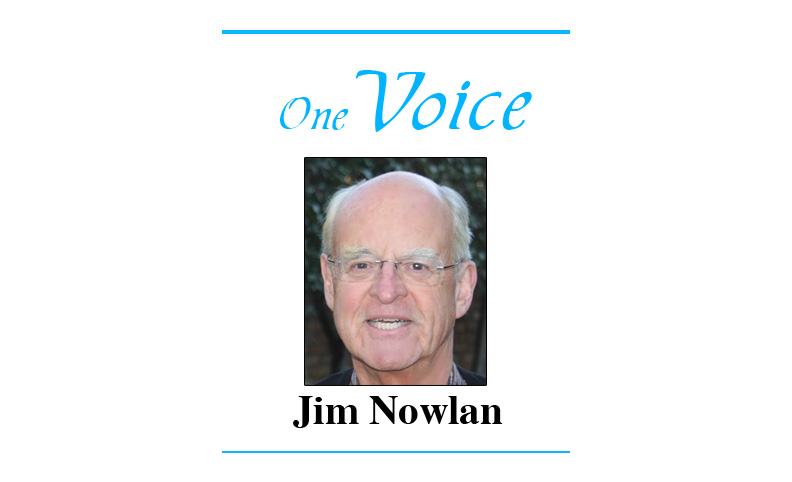
Editor’s note: In recent decades, mass communication, through the advent of technology, has diminished use of newspapers, however, more than 200 years later, newspapers continue to be use useful. This article, and another at thevoice.us/benign-wealthy-owners-promote-quality-city-journalism, bring up to date how newspapers reflect communities, offer sociological relevance, and sustain one method of communication. We at The Voice, in its 12th year, are thankful for communities’ support we receive, look forward both to additional support, and to continue our services within our capabilities.
According to a late 2019 piece in the New York Times, one in five newspapers in the United States has been shuttered over the past 15 years, and journalist numbers cut in half. This bodes ill for the vibrancy of communities, for which newspapers have been the essential glue, prod, and town crier.
We must stop wringing our hands and instead devise alternatives, just as news in paper form in the 18th Century replaced the news shouted out earlier by the town criers.
My dad ran the Stark County News in Toulon post-World War II. As a teen in the 1950s, I sat at the huge keyboard of a Model 14 Linotype, a balky iron and steel beast that spit out lines of type from molten lead. It was high tech!
On Wednesday afternoons, townsfolk crowded, literally, the corridor of the post office, waiting impatiently for Billy Humphrey to stuff the new edition into their mailboxes. The paper included one or two pages of personals, of “Mr. and Mrs. Harvey Jackson spending the weekend in Mahomet with Mrs. Jackson’s parents. They all enjoyed dinner in Champaign Saturday evening.” Personals were the Facebook of 70 years ago.
News-on-paper operations are struggling mightily to hang on to enough advertisers, stolen by Facebook and Google, to keep printing.
For towns that have lost their newspaper, here are several models, already in place here and there, that might in coming years provide that “glue, prod, and town crier” role for your community:
• The free, 100% coverage newspaper: Veteran journalist Jeff Lampe has had success with his printed Weekly Post and Prairie News publications in rural territory between Peoria and Galesburg. Each covers several communities, not one as in the past.
His publications go by mail to all 16,000 households in his coverage area. He pays reporters a small amount per each city council and school board meeting. It’s an expensive model, because Jeff’s only revenue is from advertising, and he has to produce, print, and pay postage to reach each household.
But advertisers in the small-town area love it, because they can’t afford television from the big cities nearby. Readers go page to page through the news and see the ads.
• Alternative newspapers: These have been around for a century or more. The decades-old Illinois Times in Springfield is free to all who pick the paper up weekly at drop boxes and stores throughout the State capital region. And it is a must for many, who want to know what is happening at the music spots and new restaurants. They read the latest investigative reporting of the one reporter who does such, and does it well, as well as the letters to the editor about various controversies. Not so comprehensive as the once-robust subscription newspapers, the paper still serves a valuable function.
• Nonprofit newspapers, somewhat along the NPR model: Economists say it is irrational for an individual to contribute to keep an otherwise free service going. But, folks do.
• Podcasts: I have a farmer friend with a podcast called the Shark Farmer. Rob Sharkey reaches scores of thousands of farmers in the U.S. and Canada each week, with provocative interviews about the challenging world of farm life.
Rob makes more money from the podcast than he does from his farming and outfitting businesses. Maybe a podcast of community news and interviews could generate enough listeners to spark interest from advertisers, and make doing such worthwhile.
In effect, podcasters would be the new town criers.
• Facebook: I know several dailies that use their Facebook pages to link readers to limited numbers of stories on their websites. The papers then pitch inexpensive online subscriptions.
There are Facebook pages about one’s community. It would take an unpaid administrator-editor and volunteer reporter-contributors to transform such pages into effective news outlets.
And, of course, this newspaper you are reading may figure out a profitable combination of print and online news distribution that will keep the community informed and energized.
This brings me to my final point (about time, Jim). Volunteer (or slave wage) reporters probably will be necessary for many news outlets. Fortunately, there are now more of us with some time on our hands, who might be induced into covering one, maybe two, government meetings a month.
Minimal training would be needed in how to cover and write up a meeting. There are reporting basics, which could be taught in several evenings. Maybe the State press association could organize such around the state, ditto for college journalism programs.
Solid news, about what is going on and what needs to be done in a community, is a key underpinning for community vitality. Let’s keep the news coming, whatever the format.
For many years, Jim Nowlan was a senior fellow and political science professor at the University of Illinois in Urbana-Champaign. He has worked for three unindicted governors and published a weekly newspaper in central Illinois.

